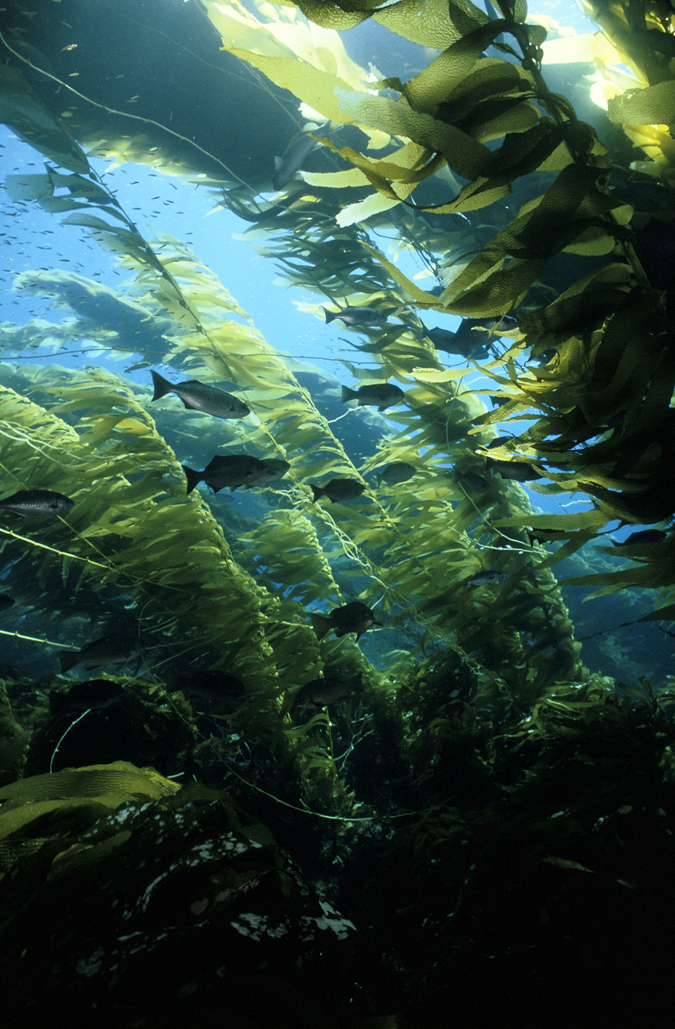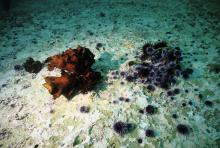

Predation by otters keeps urchin populations in check, allowing kelp –– a favorite food of urchins –– to flourish. But what if otters were harvested to near extinction for their fur? The resulting overabundance of urchins would decimate the kelp forest, leaving little food or shelter for fish and invertebrates. And so it may go, as declines in these species are likely to affect others.
Such is the potential trickle-down effect on the food chain of even subtle shifts in a single species –– tipping points that can induce wholesale, sometimes irreversible change to entire ecosystems. Examples of these ecological thresholds and unintended consequences are many –– the otter-urchin scenario occurred in Alaska and California –– but solutions are few. Some UC Santa Barbara researchers hope to change that.
A new project of scientists at UCSB's National Center for Ecological Analysis and Synthesis (NCEAS) and partners aims to synthesize existing research on tipping points in marine ecosystems and conduct case studies to devise a set of early warning indicators and management tools that may help to predict, even prevent, threatened systems from falling off the precipice.
"We know that thresholds in marine ecosystems can lead to rapid changes in their ability to support activities and services that people value, but we seldom have information about how human actions are affecting these things –– and how close we might be to those tipping points," said Carrie Kappel, associate project scientist and lead principal investigator (PI) on the study.
The NCEAS team of Kappel and co-PIs Ben Halpern and Kimberly Selkoe –– with partners at Stanford's Center for Ocean Solutions, the Environmental Defense Fund, and the National Oceanographic and Atmospheric Administration (NOAA) –– have been awarded $3.1 million from the Gordon and Betty Moore Foundation for the soon-to-launch study, "Ecosystem Thresholds and Indicators for Marine Spatial Planning."
"This is an ambitious project that addresses really critical issues in natural resource management and protecting and managing our oceans effectively," said Halpern, director of UCSB's Center for Marine Assessment and Planning. "We're looking at how natural ecosystems respond to changes in human pressure, or to climate change, and what the effects are on the human community. I think people sometimes forget that we are managing these systems not just for the sake of creating bureaucracy and regulations. We have an interest in keeping ecosystems healthy and sustainable not just for nature's sake, but because we, as humans, fundamentally value and depend upon them."
Among the core focuses of the four-year project is identifying advance indicators of threshold shifts, which could include water quality, an abundance or lack of certain species, and even rates of disease, according to co-PI Selkoe, a marine ecologist and NCEAS associate scientist. Ascertaining such early warning signals, she said, will improve the monitoring capabilities of ecosystem managers and potentially enable them to prevent threshold shifts –– or at least be better prepared.
"We may or may not be able to really know how fast we're approaching a threshold shift, but if managers are conscious of these shifts they can be more prepared and cognizant of the possibilities," Selkoe explained. "There may be a lot of cases of climate change combined with ocean cycle changes that nothing people can do will prevent. There's a lot beyond our control, which probably means we need to manage more conservatively. The marine resource management world is moving toward these strategies, toward incorporating big picture thinking and comprehensive approaches that will require coordination across sectors –– managers need more tools to operate at that scale."
While the first phase of the project will be centered on existing data and models, the second phase will involve a more in-the-trenches approach. Deep-dive case studies and engagement with active marine managers and policy makers are intended to "get the folks on the ground involved from the very beginning, so that the tools we develop can be as useful as possible to the people who are actually doing this work," said Kappel. "We want to give managers tools that help them to maximize the delivery of benefits to people, while protecting the ecosystem and minimizing the risk that it will be tipped into a different state.
"Our coasts and our oceans are becoming increasingly crowded, and more and more people depend upon them," she added. "Inevitably, there's this problem of increasing competition for limited ocean resources. We need to be able to proactively plan for how we're going to use those resources and do it in a way that allows them to be sustainable for the long run. If we are unaware of the potential cliffs you can fall off in the ecosystem dynamics, we run the risk of diminishing benefits to people and of changing ecosystems forever."
Other researchers on the study include Larry Crowder and Meg Caldwell at Stanford's Center for Ocean Solutions; Rod Fujita at EDF; and Phil Levin, with NOAA.
The Gordon and Betty Moore Foundation, established in 2000, seeks to advance environmental conservation, patient care, and scientific research. The goal of the Marine Conservation Initiative is to achieve healthy marine ecosystems in North America that support sustainable use. For more information, please visit www.moore.org.
*Acquisition and digitization of the Ronald H. McPeak collection was made possible with funding from the National Science Foundation to the Santa Barbara Coastal Long Term Ecological Research project.
Related Links



